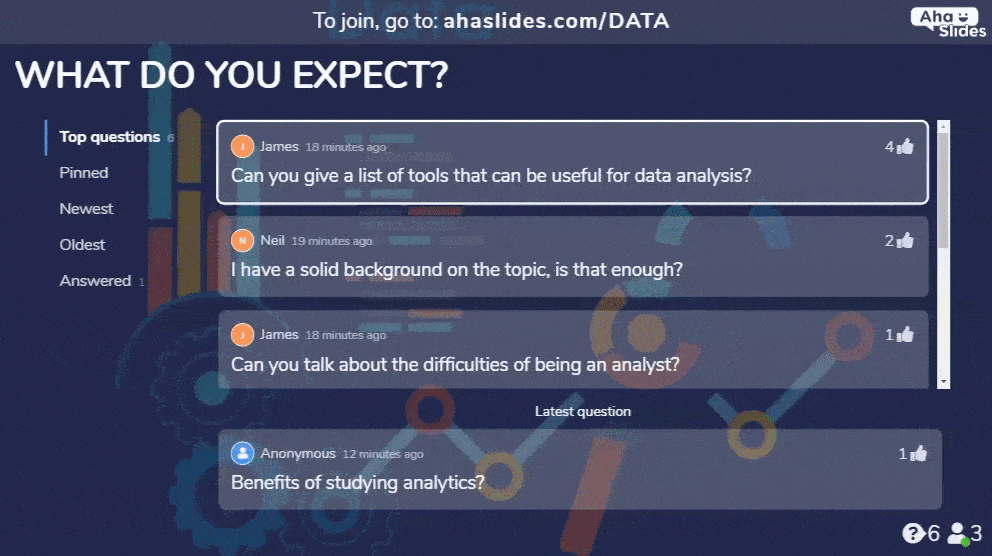戰略管理流程 這四個階段是什麼?查看4年最佳實務指南
自21世紀初先進技術和經濟動態的出現以來,策略管理不斷發展。在當今複雜的世界中,新的商業模式層出不窮。
很快,傳統的管理方法將被高效的戰略管理技術所取代。 問題是是否有一個特定的戰略管理公式可以贏得每一個案例。
誠然,策略管理流程並非新概念,但如何真正發揮作用則取決於許多因素。管理者首先需要瞭解策略管理流程的基本要素及其運作方式,然後運用創新方法,根據不同情況調整策略。
目錄

Overview
| 策略管理最早是什麼時候引進的? | 1960s |
| 最流行的策略管理流程的例子? | Wheelen & Hunger 的 SMP 模型 |
AhaSlides 的更多提示
策略管理的標準流程是什麼?
策略管理流程是指組織為制定和實施策略計畫而進行的一系列活動和步驟。最受歡迎的策略管理流程之一是 Wheelen & Hunger 的 SMP 模型,於2002年出版。
戰略管理過程是一個持續不斷的迭代過程,可幫助組織識別和利用其優勢、應對挑戰並利用機會實現其目標。
有效的戰略管理過程可以幫助組織 保持競爭優勢提升獲利能力,並取得長期成功。策略管理流程有多種方法,但所有管理團隊都必須注意四個最重要的階段。
第一階段:戰略制定
戰略管理過程的第一階段,戰略制定涉及確定各種選擇並選擇最佳替代行動方案。 制定戰略,概述組織將如何實現其目標和目標,同時考慮競爭環境、可用資源和其他可能影響成功的因素。
- 制定戰略使命和願景
- 分析現狀和市場
- 確定量化目標
- 為每個部門制定不同的計劃
段落 2: 策略的執行
戰略實施是戰略管理過程的重要組成部分。 它涉及將戰略目標轉化為具體的行動和舉措,從而帶來更好的業務成果和市場競爭優勢。
- 制定行動計劃
- 分配資源
- 分配職責
- 建立控制系統
- 建立支持性的組織文化
- 管理變革阻力
第三階段:戰略評估
戰略管理過程中的另一個關鍵步驟,戰略評估涉及評估已實施戰略的有效性,並確定其是否實現了預期的目標。
- 定義性能指標
- 收集數據
- 分析性能
- 比較性能
- 收集利益相關者的反饋
階段 4:策略修改
許多管理團隊都忽略了這個階段,但必須確保在監控和評估流程之後對策略進行調整,以便其繼續與組織的目標和宗旨保持一致。
- 分析反饋
- 監控性能
- 評估內部和外部環境
- 重新審視戰略計劃
- 調整策略
以上就是策略管理流程完整範例中的 4 個階段!

戰略規劃經理的角色
一個有效的戰略管理過程不能缺少戰略管理團隊的作用。 他們是採取最佳替代行動方案的關鍵領導者 戰略決策 並成功執行。
策略規劃經理負責制定、實施和監督策略計劃,以確保其符合組織的使命、願景和目標。
- 領導戰略規劃過程:這涉及與利益相關者協調、收集數據、分析趨勢和製定戰略計劃。
- 傳達戰略計劃:這涉及將戰略計劃傳達給利益相關者,包括員工、客戶、供應商和股東,以確保每個人都與計劃保持一致並了解他們在計劃執行中的作用。
- 監控性能:這涉及根據既定指標跟踪績效,並將其與行業基準和最佳實踐進行比較,以確定需要改進的領域。
- 進行環境掃描:這涉及評估內部和外部環境的變化,包括技術、法規、競爭和市場條件的變化,並相應地修改戰略計劃。
- 提供指導和支持:這涉及為部門和團隊提供指導和支持,以確保他們理解戰略計劃並與其目標保持一致。
- 確保問責制:這涉及確保部門和團隊對其績效和對戰略計劃的貢獻負責。
- 促進變革管理:這涉及促進變革管理工作,以確保組織能夠適應內部和外部環境的變化並有效實施戰略計劃。
戰略規劃中的人力資源
人力資源通過識別和解決戰略規劃過程中的關鍵角色 勞動力需求 這對於實現組織的策略目標至關重要。透過使人力資源策略與整體業務策略保持一致,人力資源可以幫助確保組織在合適的時間擁有合適的人才,在合適的職位上發揮合適的技能,從而實現其策略目標。
人力資源專業人員可以對現有勞動力進行全面分析,以確定實現組織策略目標所需解決的優勢、劣勢和技能差距。
他們可以根據組織的戰略目標和目標,以及外部環境和行業趨勢,預測組織未來的勞動力需求。
人力資源專業人員可以根據既定的績效指標持續監控和評估人力資源策略和措施的有效性,以確保其實現預期成果。
如何克服策略管理過程中的失敗—7 個技巧
SWOT分析
SWOT 分析是策略管理的寶貴工具,因為它有助於全面概述組織的內部和外部環境,確定策略重點,指導決策,促進溝通和協作,並實現風險管理。
智能目標
SMART 目標是戰略管理的寶貴框架,因為它們提供清晰度和重點,使目標與戰略保持一致,加強問責制,鼓勵創造力和創新,並促進資源分配。 通過設定 SMART 目標,組織可以提高實現成功和有效執行戰略計劃的機會。
回饋、調查和民意調查
向員工徵求回饋意見可以改善策略評估流程,並加快策略修改速度。或者,讓所有員工參與策略制定過程,也是讓員工與組織目標緊密聯繫、步調一致的好方法。使用來自 啊哈幻燈片 可以使你的 回饋收集和分析 更有生產力。
擁抱創新
集思廣益,找到解決方案 擁抱創新是企業適應技術變革速度的有效方式,尤其是在重新設計戰略管理計劃方面。 利用高科技軟件進行管理,跟踪績效,提高管理和績效評價的質量。
建立問責文化
建立文化 問責,員工對他們對戰略計劃的貢獻負責,可以幫助確保計劃得到有效實施,並及時解決失敗。
清除通信
清除並 開放交流 領導者、經理和員工之間的溝通對於戰略計劃的成功至關重要。 這包括向所有利益相關者傳達計劃、目標和進展,以及確保所有員工了解他們的角色和責任。
技術培訓
不同部門可以與 HR 合作開發和提供有用的 培訓課程 為員工和基層管理人員提供幫助,幫助他們掌握更高級的技能和知識。 對於遠程培訓,在線交互式演示工具,如 啊哈幻燈片 在鼓勵員工參與和互動方面表現出最好的一面。

最後的思考
透過遵循上述指南,組織可以製定全面有效的策略管理流程,幫助他們實現目標並在動態的商業環境中保持競爭力。
常見問題(FAQ)
有問題嗎?我們有答案。









